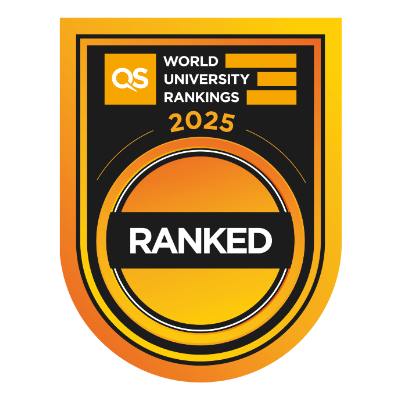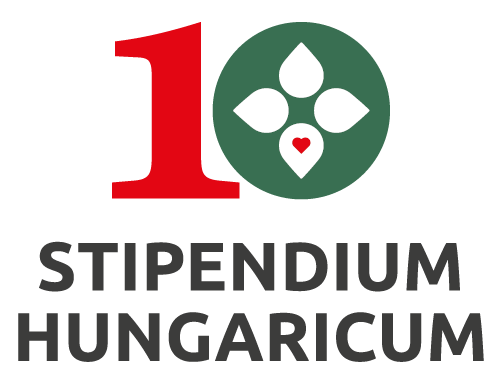The Arrabona Racing Team is not slowing down: the SZE team would take the lead with its tenth car
It is always a fascinating question to see what the Arrabona Racing Team will come up with for its current Formula Student car. The student team from Széchenyi István University has been gradually approaching the world elite in terms of technology over the past few years, which was reflected in their results last summer: they finished on the podium in three of Europe's most prestigious races and this year they are looking to continue where they left off last year. The ART_X is aiming for first place with a revamped cooling system, redesigned bodywork and an upgraded SZEngine engine.
Arrabona Racing Team (ART) has come a long way in ten years - both literally and figuratively. Building a Formula Student race car from scratch is by no means a foregone conclusion: it requires an existing knowledge base, proven design and construction processes, and a skilled, collaborative team.
ART has made spectacular progress since 2014 and a decade has been enough to catch up with the world elite in both technology and results. Last season was a milestone in this respect, with the team finishing third in the Hungarian race and second in the Austrian and German races.
The design techniques and innovative solutions used, also reflect an increasingly professional approach: generative design, carbon-composite self-supporting monocoque bodywork or telemetry systems for real-time measurements are already at the cutting edge of the industry. Overall, the collaboration between the Arrabona Racing Team and the SZEngine engine development team has created a student talent centre at Széchenyi István University, alongside the SZEnergy Team, that provides marketable knowledge to the team members.

The sold-out design freeze event took place on the ground floor of the Management Campus (Photo: Márton Horváth)
"The question for us is always what we will see here. We are always excited to see the new car designs, because we are always surprised by the innovative solutions the students come up with."
- said Dr. Dániel Feszty, Head of the Depasrtment of Whole Vehicle Engineering at Széchenyi István University, in his welcome speech at the design freeze presentation of the team's tenth vehicle, named ART_X, and then went on to describe the stages of the team's professional development.
"Many years ago, we thought that we, as teachers, should be actively involved in the knowledge management of the team. This meant regular weekly or fortnightly consultations. Today, this has completely disappeared, but the results have not disappeared and are improving. You seem to have developed an internal culture that no longer requires any other input from us. You have knowledge that we don't even teach at the university, a know-how that you have created without our initiative or intervention." - praised the students, Dr. Dániel Feszty, adding that currently roughly one fifth of Audi Hungaria's whole vehicle engineering department is made up of young employees who came to the company from ART in one way or another.
"One of the best entrants in the industry today is coming from Formula Student"
- the head of the department concluded.
 According to Dr. Dániel Feszty, Formula Student is the most effective form of practice-oriented training (Photo: Márton Horváth)
According to Dr. Dániel Feszty, Formula Student is the most effective form of practice-oriented training (Photo: Márton Horváth)
The design freeze marks the end of the design phase for all student racing teams building vehicles, when team members present their current developments to sponsors, partners and the press before construction begins, halfway through the summer competition period. In the case of ART, after last year's successes, it was particularly interesting to see the direction the team would take after the exceptional performance of the ART_09 car.
"This year we are going to Spielberg the Austrian race again and to the Hungaroring, to the Formula Student East. Unusually, we will finish the season in Croatia with the FS Alpe Adria."
- Kristóf Hege leader of the team said, confirming that the podium finishes had whetted their appetite and they are aiming for first place with their tenth car.
 The car was presented by Kristóf Hege, team leader of ART, Máté Boros, team leader of SZEngine and Imre Tóth, head of construction of ART.
The car was presented by Kristóf Hege, team leader of ART, Máté Boros, team leader of SZEngine and Imre Tóth, head of construction of ART.
The vehicle, named ART_X, was presented by Imre Tóth, Head of Construction. Looking at the model, you can immediately notice the spectacular changes:
the car has been enriched with wide side "boxes" and the nose has been softened.
 Preliminary model of ART_X. On the fuselage of the car, you can see the wide side boxes that will be responsible for the air cooling of the engine.
Preliminary model of ART_X. On the fuselage of the car, you can see the wide side boxes that will be responsible for the air cooling of the engine.
"Last year we had a lot of problems with the cooling of the engine, so we paid a lot of attention to this in the design. We designed a side box that gives a significant mass flow of coolant from both sides, so the air can flush the engine bay. This means we have to add extra weight to the car, which compromises its sleekness, but in the long run it will pay off in reliability. However, do not let appearances fool you, the more spacious bodywork has the same aerodynamic properties as last year's, and even slightly better aerodynamics, with a slight increase in downforce.”- Imre Tóth emphasised the advantages of the new solution.
The students also redesigned the car's bodywork, which was also significantly modified, mainly to introduce a cooling system. The cockpit also had to be narrowed. At the same time, the bullhorn (which directed air to the rear wings), which had been common in recent years, disappeared from the nose of the car, as the new wing design and side duct made it unnecessary.
"We introduced one more big change this year that, based on the simulations, could improve the car a lot: a complete redesign of the chassis. Previously, we used a trailing arm suspension, which we sometimes had problems adjusting accurately, so we switched to a pushrod suspension," continued Imre Tóth
. "The experience is that the car is slightly modified in the execution compared to the simulation, but the results are promising."- said the design manager.
 According to Imre Tóth, the total weight of this year's car will be a touch less than last year's, but only by a tiny margin (Photo: Márton Horváth)
According to Imre Tóth, the total weight of this year's car will be a touch less than last year's, but only by a tiny margin (Photo: Márton Horváth)
Máté Boros, head of the SZEngine engine development team at Széchenyi István University, spoke about the SZEngine engine at the heart of the car. As always, their aim was to eliminate faults and further increase performance. Less and less of the factory parts of the modified KTM 690 were left, this time the throttle valve was adapted to the team's needs, which consumes less power and can shift more dynamically. The unique master cylinder and covers have also been optimised, which is important for weight reduction.
The problem of cooling the engine has also been recognised by SZEngine, and they are trying to dissipate more heat by improving the oil circuit. However, it is important to know that these engines are mainly designed to be air-cooled, so the design of the car will determine how they can provide the right temperature.
"In addition to the new SZEngine 2023 engine, we are also developing a hybrid power source. We have assembled a prototype with high performance batteries. We've made significant progress in this area," the team leader explained.
 Máté Boros, team leader of SZEngine, said that the new inlet-intake manifold means a 60 percent weight reduction for the engine.
Máté Boros, team leader of SZEngine, said that the new inlet-intake manifold means a 60 percent weight reduction for the engine.
percent weight reduction for the engine.
Another highlight is ART_X's telemetry system, which gives the driver and team members an almost instantaneous view of the car's performance. A variety of sensors measure the vehicle's parameters, including tyre pressure and mileage, and transmit them to the pit via a 4G connection, which means very fast communication.
"We use a completely retrained neural network for path recognition, which we have reprogrammed using around three thousand data records, making our algorithm more accurate. It is based on calculations on a Jetson TX2 chip." - Imre Tóth pointed out the self-driving developments.
"Our camera has a lot of potential. With the Zed2 device, we can accurately determine the position of the car in relation to objects in the environment," noted the design manager, who explained that the self-driving solutions will be tested on one of the team's previous vehicles, so they will soon be able to present a moving vehicle.
 The picture shows the object recognition of a Formula Student car.
The picture shows the object recognition of a Formula Student car.











